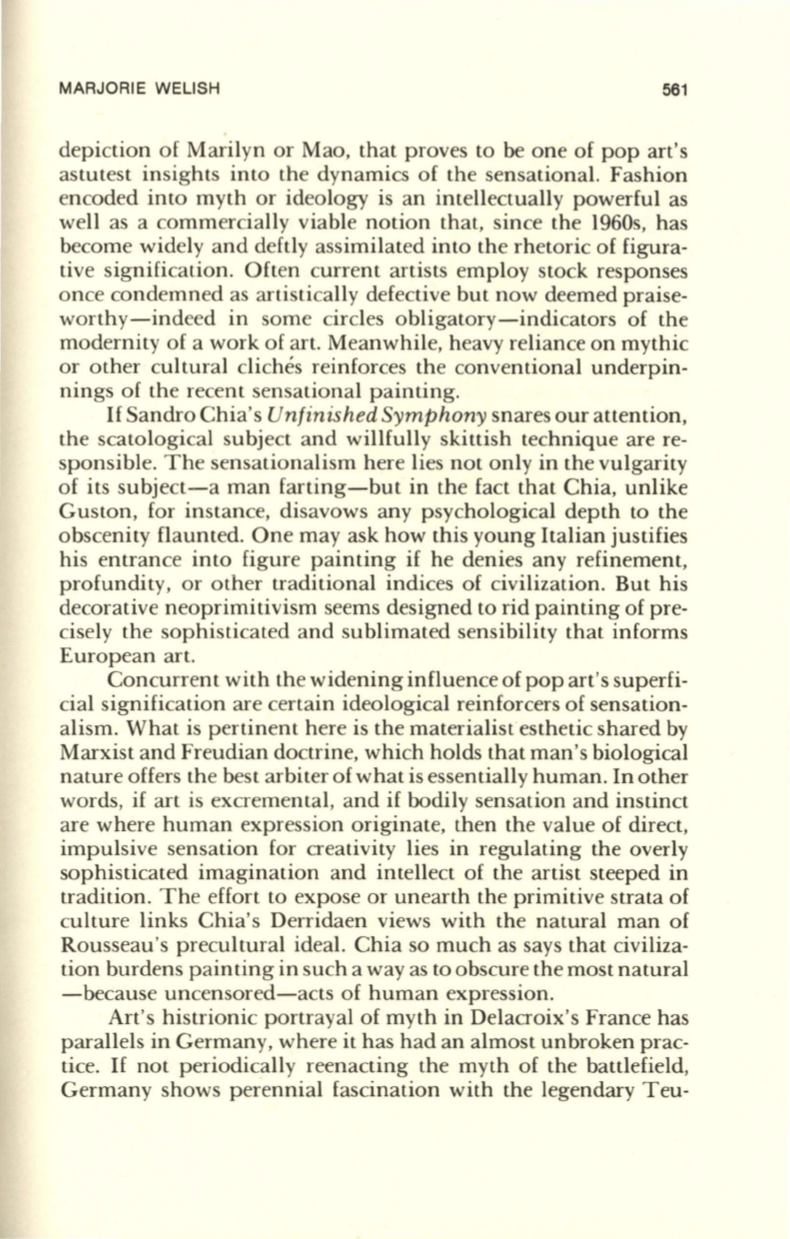
MARJORIE WELISH
561
depiction of Marilyn or Mao, that proves to
be
one of pop art's
astutest insights into the dynamics of the sensational. Fashion
encoded into myth or ideology is an intellectually powerful as
well as a commercially viable notion that, since the 1960s, has
become widely and deftly assimilated into the rhetoric of figura–
tive signification. Often current artists employ stock responses
once condemned as artistically defective but now deemed praise–
worthy-indeed in some circles obligatory-indicators of the
modernity of a work of art. Meanwhile, heavy reliance on mythic
or other cultural cliches reinforces the conventional underpin–
nings of the recent sensational painting.
If
Sandro Chia's
Unfinished Symphony
snares our attention,
the scatological subject and willfully skittish technique are re–
sponsible. The sensationalism here lies not only in the vulgarity
of its subject-a man farting-but in the fact that Chia, unlike
Guston, for instance, disavows any psychological depth to the
obscenity flaunted . One may ask how this young Italian justifies
his entrance into figure painting if he denies any refinement,
profundity, or other traditional indices of civilization. But his
decorative neoprimitivism seems designed to rid painting of pre–
cisely the sophisticated and sublimated sensibility that informs
European art.
Concurrent with the widening influence of pop art's superfi–
cial signification are certain ideological reinforcers of sensation–
alism. What is pertinent here is the materialist esthetic shared by
Marxist and Freudian doctrine, which holds that man's biological
nature offers the best arbiter of what is essentially human. In other
words, if art is excremental, and if bodily sensation and instinct
are where human expression originate, then the value of direct,
impulsive sensation for creativity lies in regulating the overly
sophisticated imagination and intellect of the artist steeped in
tradition. The effort to expose or unearth the primitive strata of
culture links Chia's Derridaen views with the natural man of
Rousseau's precultural ideal. Chia so much as says that civiliza–
tion burdens painting in such a way as to obscure the most natural
-because uncensored-acts of human expression.
Art's histrionic portrayal of myth in Delacroix's France has
parallels in Germany, where it has had an almost unbroken prac–
tice.
If
not periodically reenacting the myth of the battlefield,
Germany shows perennial fascination with the legendary Teu-


